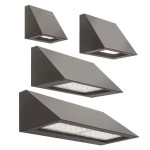Best Settings to Take Outdoor Portraits
Outdoor portraits offer a unique opportunity to capture the beauty of natural light and create stunning imagery. However, achieving the desired outcome requires careful consideration of various settings and factors. This article delves into the best settings for taking outdoor portraits, providing practical advice and techniques to enhance your photographic skills.
Lighting: The Foundation of Outdoor Portraits
Lighting is arguably the most crucial element in outdoor portrait photography. Natural light offers a dynamic and versatile tool, allowing you to create a wide range of moods and styles. Here are key lighting scenarios to consider:
- Golden Hour: This period shortly after sunrise and before sunset provides a warm, soft glow, ideal for romantic and intimate portraits. The long shadows cast by the low sun create a sense of depth and drama.
- Overcast Skies: Diffused light from an overcast sky eliminates harsh shadows and creates evenly lit subjects, perfect for capturing natural tones and minimizing blemishes. It's a forgiving light that softens features and adds a serene quality to portraits.
- Open Shade: Seeking shade under trees or buildings allows for a balanced exposure without direct sunlight. Open shade provides soft, gentle light that is ideal for capturing detailed facial features and subtle nuances in expressions.
Understanding the quality of light is crucial.
- Hard Light: Direct sunlight creates strong contrasts and harsh shadows. While this can be used for dramatic effects, it often results in unflattering highlights and deep shadows.
- Soft Light: Diffused light from overcast skies, clouds, or shade creates a softer, more even illumination, reducing harsh shadows and highlighting textures. This light is generally preferred for portraits, particularly those featuring individuals with sensitive skin or prominent features.
Composition and Background: Creating Context
Composition and background form the visual narrative of an outdoor portrait. Consider the following to craft compelling imagery:
- Rule of Thirds: This fundamental rule of composition suggests dividing the frame into nine equal sections using two horizontal and two vertical lines. Placing key elements at the intersections of these lines creates visual interest and balance.
- Leading Lines: Utilizing natural elements like paths, fences, or tree branches to guide the viewer's eye towards the subject adds depth and structure to the composition.
- Background Choice: A visually appealing background that complements the subject is essential. Avoid distracting elements like garbage cans or busy street scenes. Natural landscapes, textured walls, or even simple greenery can enhance the portrait's overall impact.
- Depth of Field: Adjusting the aperture setting controls the depth of field, blurring the background and focusing attention on the subject. A shallow depth of field creates a sense of isolation and emphasizes the subject, while a larger depth of field captures more background detail.
Posing and Expression: Capturing Emotion
Posing and expressions play a vital role in creating engaging outdoor portraits. Here's how to guide your subject:
- Natural Poses: Encourage relaxed and natural poses, avoiding stiff or awkward postures. Suggest subtle movements like turning the head slightly or shifting the weight to one leg to achieve a more dynamic composition.
- Eye Contact: Eye contact is a powerful tool in portraiture. Direct eye contact creates a connection with the viewer, while looking away can suggest thoughtfulness or introspection.
- Expression Guidance: Encourage the subject to express a range of emotions, from smiles to serious expressions. Play with light and shadow to create a sense of mood and depth.
Beyond these general guidelines, remember that posing and expressions are highly subjective. Experiment with different angles, poses, and emotions to find what best complements the subject's personality and the overall aesthetic of the photograph.

Settings For Portraits Taken Indoors Outdoors

10 Settings And Equipment Tips For Portrait Photography

What Is The Best Setting For Outdoor Portraits With Examples Formed From Light

Settings For Portraits Taken Indoors Outdoors

Settings For Portraits Taken Indoors Outdoors

Settings For Portraits Taken Indoors Outdoors

Digital Photography Secrets Taking Great Outdoor Portraits For Dummies

Best Settings For Outdoor Portraits By B C

Settings For Portraits Indoor Outdoor Group Photoshoot Photography Portrait Tips

On Flash Outdoors Tangents
Related Posts







